A tale of two glutaminases: homologous enzymes with distinct roles in tumorigenesis
- PMID: 28111979
- PMCID: PMC5558546
- DOI: 10.4155/fmc-2016-0190
A tale of two glutaminases: homologous enzymes with distinct roles in tumorigenesis
Erratum in
-
Corrigendum.Future Med Chem. 2017 Apr;9(5):527. doi: 10.4155/fmc-2016-0190c1. Epub 2017 Mar 23. Future Med Chem. 2017. PMID: 28332860 Free PMC article. No abstract available.
Abstract
Many cancer cells exhibit an altered metabolic phenotype, in which glutamine consumption is upregulated relative to healthy cells. This metabolic reprogramming often depends upon mitochondrial glutaminase activity, which converts glutamine to glutamate, a key precursor for biosynthetic and bioenergetic processes. Two isozymes of glutaminase exist, a kidney-type (GLS) and a liver-type enzyme (GLS2 or LGA). While a majority of studies have focused on GLS, here we summarize key findings on both glutaminases, describing their structure and function, their roles in cancer and pharmacological approaches to inhibiting their activities.
Keywords: 968; BPTES; CB-839; Warburg effect; cancer; glutaminase; inhibitor; metabolism.
Conflict of interest statement
This work was supported by funding from the NIH (GM040654, GM047458, CA201402). The authors have no other relevant affiliations or financial involvement with any organization or entity with a financial interest in or financial conflict with the subject matter or materials discussed in the manuscript apart from those disclosed.
No writing assistance was utilized in the production of this manuscript.
Figures


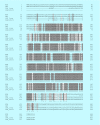
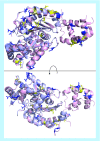
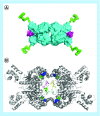
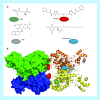
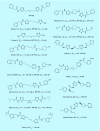
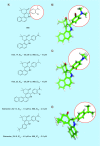
Similar articles
-
Structure and activation mechanism of the human liver-type glutaminase GLS2.Biochimie. 2021 Jun;185:96-104. doi: 10.1016/j.biochi.2021.03.009. Epub 2021 Mar 18. Biochimie. 2021. PMID: 33746066 Free PMC article.
-
Characterization of the interactions of potent allosteric inhibitors with glutaminase C, a key enzyme in cancer cell glutamine metabolism.J Biol Chem. 2018 Mar 9;293(10):3535-3545. doi: 10.1074/jbc.M117.810101. Epub 2018 Jan 9. J Biol Chem. 2018. PMID: 29317493 Free PMC article.
-
Recent Development of Small Molecule Glutaminase Inhibitors.Curr Top Med Chem. 2018;18(6):432-443. doi: 10.2174/1568026618666180525100830. Curr Top Med Chem. 2018. PMID: 29793408 Review.
-
Glutaminases regulate glutathione and oxidative stress in cancer.Arch Toxicol. 2020 Aug;94(8):2603-2623. doi: 10.1007/s00204-020-02838-8. Epub 2020 Jul 18. Arch Toxicol. 2020. PMID: 32681190 Review.
-
Liver-Type Glutaminase GLS2 Is a Druggable Metabolic Node in Luminal-Subtype Breast Cancer.Cell Rep. 2019 Oct 1;29(1):76-88.e7. doi: 10.1016/j.celrep.2019.08.076. Cell Rep. 2019. PMID: 31577957 Free PMC article.
Cited by
-
Identification and Validation of a Novel Ferroptotic Prognostic Genes-Based Signature of Clear Cell Renal Cell Carcinoma.Cancers (Basel). 2022 Sep 27;14(19):4690. doi: 10.3390/cancers14194690. Cancers (Basel). 2022. PMID: 36230613 Free PMC article.
-
Rethinking glutamine metabolism and the regulation of glutamine addiction by oncogenes in cancer.Front Oncol. 2023 Mar 7;13:1143798. doi: 10.3389/fonc.2023.1143798. eCollection 2023. Front Oncol. 2023. PMID: 36959802 Free PMC article. Review.
-
Glutamine-Derived Aspartate Biosynthesis in Cancer Cells: Role of Mitochondrial Transporters and New Therapeutic Perspectives.Cancers (Basel). 2022 Jan 4;14(1):245. doi: 10.3390/cancers14010245. Cancers (Basel). 2022. PMID: 35008407 Free PMC article. Review.
-
β Cell-specific deletion of Zfp148 improves nutrient-stimulated β cell Ca2+ responses.JCI Insight. 2022 May 23;7(10):e154198. doi: 10.1172/jci.insight.154198. JCI Insight. 2022. PMID: 35603790 Free PMC article.
-
Inhibiting Glutaminase Exerts Opposite Effects on Ovariectomy-Induced and Age-Related Reductions in Murine Bone Mass.Aging Dis. 2024 Feb 6;16(1):432-53. doi: 10.14336/AD.2024.0201. Online ahead of print. Aging Dis. 2024. PMID: 38377021 Free PMC article.
References
Publication types
MeSH terms
Substances
Grants and funding
LinkOut - more resources
Full Text Sources
Other Literature Sources
Miscellaneous
